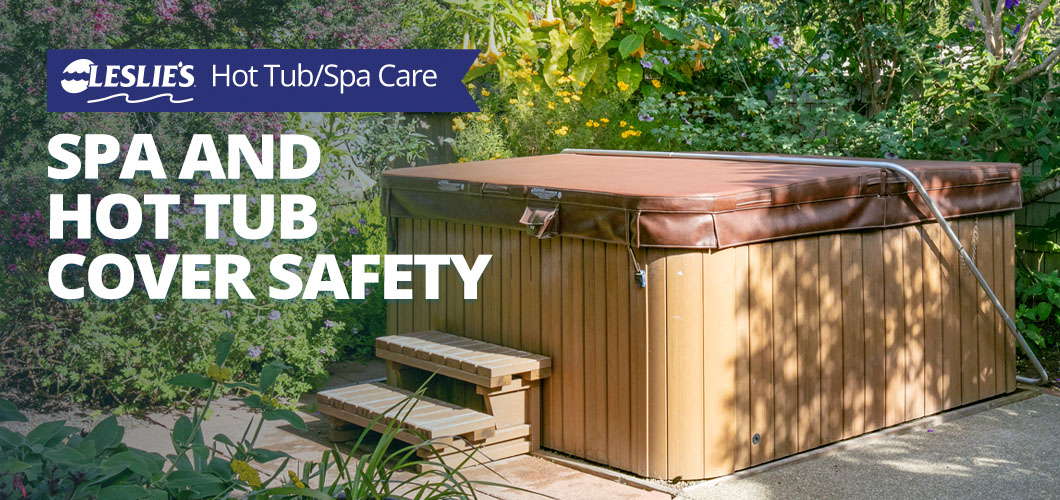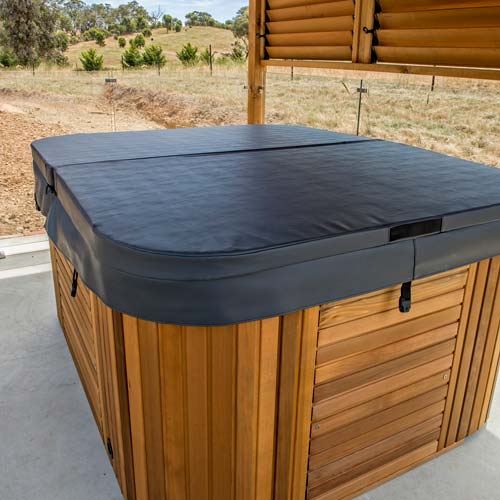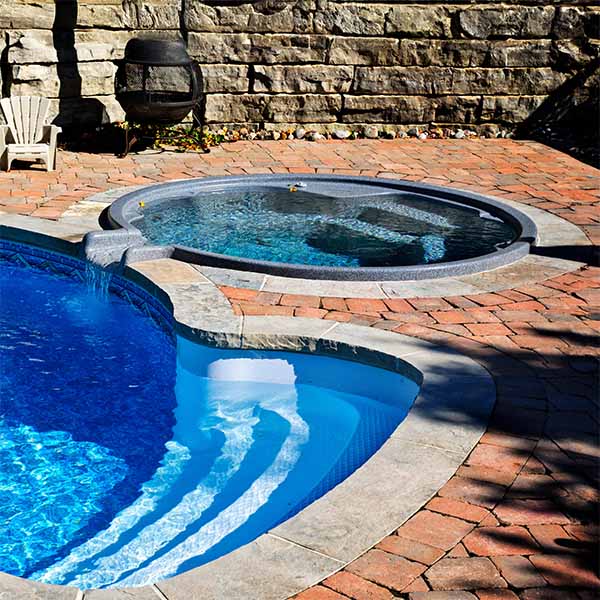
Spa and Hot Tub Cover Safety
Since the 1980's, more than 250 children age 1-4 have drowned in hot tubs and spas. A small percentage became entrapped on suction outlets. Most were not experienced swimmers who fell into an open spa or hot tub, and were not able to escape.
A strong locking spa cover is the best protection for children in homes with spas or hot tubs. No matter what type of spa you have, there is a way to make it safer with the use of a cover.
Above Ground Hot Tub and Spa Cover Safety

Latch your spa cover clips every time you put the cover back on, and never leave the spa unmonitored when you have the cover off. A simple practice of latching the spa cover clips, and keeping your spa covered when it's not being watched will keep your spa safe.
For more advanced spa cover safety locking hardware, there are two other ways to secure the cover - with external straps or steel bars. This not only keeps out children, but any unauthorized use. As horrible as the numbers of drownings in spas are for children, the number of adults found dead in spas is double.
Spa cover straps are primarily sold as heavy duty Wind Straps. But they also function as extra protection, to delay or frustrate children. And also inebriated acquaintances who decide to crash your tub when you're not looking.
Lock them over the spa cover for extra protection. Wind straps use a standard style spa cover clip to protect against high winds, and double your spa cover security.
Want even more protection?
Use the Spa Cover Lock, a spa cover locking bar, made by Arctic Spas. Attach two heavy plates on the side of your spa cabinet, and use a padlock to secure the curved steel bar. Works with spa cover lifters to keep the spa cover pressed down on the tub, and prevent use of the spa cover lifter.
Used with a spa cover lifter, it also prevents being able to slide the cover off, in the other direction. If you have no spa cover lifter, two bars can be used, in opposite directions, to absolutely prevent hot tub cover removal.
Inground Spas and Hot Tubs

Outdoor or indoors, a spa that is at ground level presents an even larger danger to young residents or visitors, and accounts for more drownings and injuries than above ground spas - which are more difficult to access for 1-4 year old kids and easier to lock a spa cover on safely.
Many inground spas may not even have a rigid spa safety cover - using a floating thermal blanket or soft cover instead. Of course, these are more convenient to use, than a rigid spa cover, but if there are young people in the house, nothing is safer.
You can still secure a spa cover on an inground spa. Indoor spas may present more of a challenge, but nearly any flooring type around a spa can be drilled, and screw anchors installed - so that standard spa cover straps can be connected. Even outdoor spas - you can drill into the concrete with a small masonry drill bit and a hammer drill.
Want even more protection?
You can use pool safety cover hardware to secure a spa cover on an outdoor, in the ground spa or hot tub. Drill holes with a 3/4" masonry bit and a heavy duty hammer drill. Connect nylon strapping with the stainless steel buckles to the s.s. springs, and then attach the cover springs to the brass anchors with the installation rod that is used. In this way, you can run 2 or more straps over top of your cover, which hold the cover down tightly, and is difficult to remove without the installation rod. You can't buy these, but you can make them, with pool safety cover hardware, and nylon strapping from the fabric store.
Keeping your spa safe is every hot tub owners responsibility. Even if you don't have children, you likely have neighbors and guests who do - and also keeping out trespassing acquaintances should also be on your mind, to prevent an unwanted tragedy in your spa or hot tub.